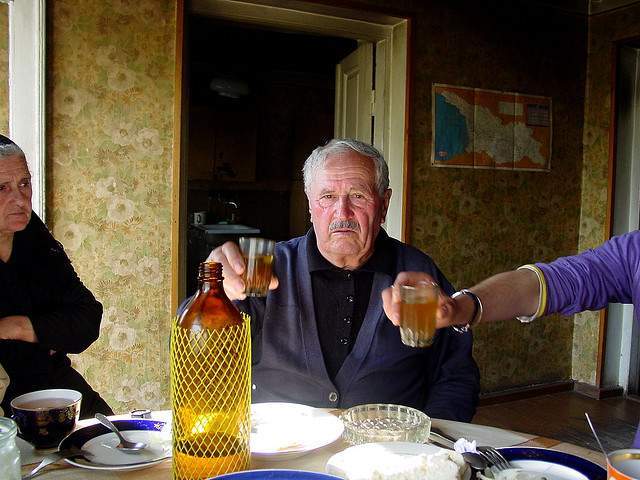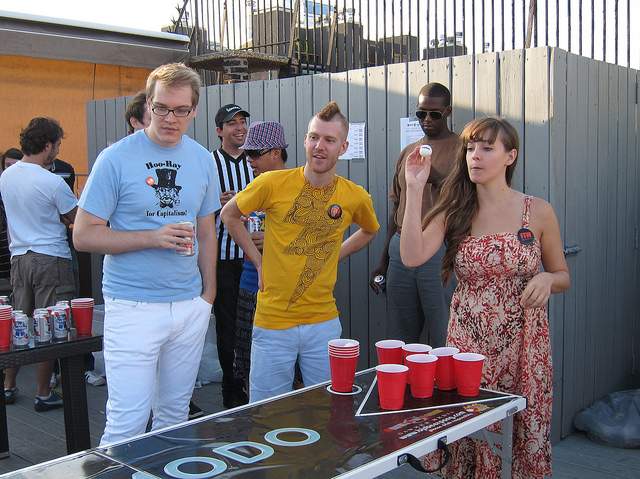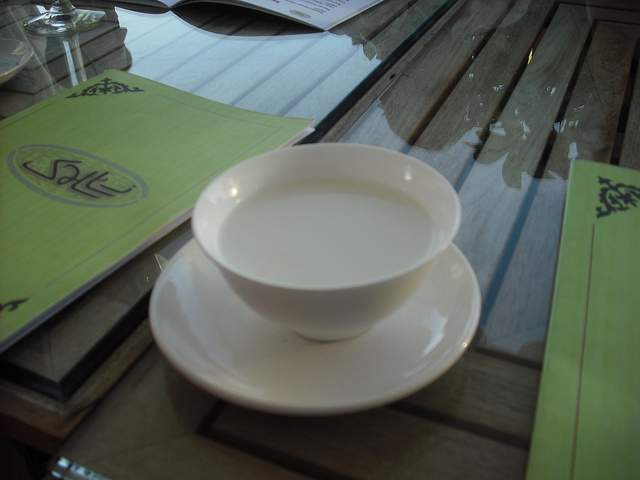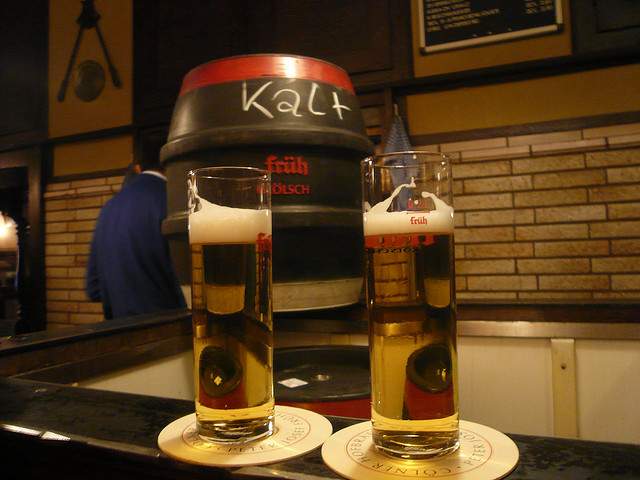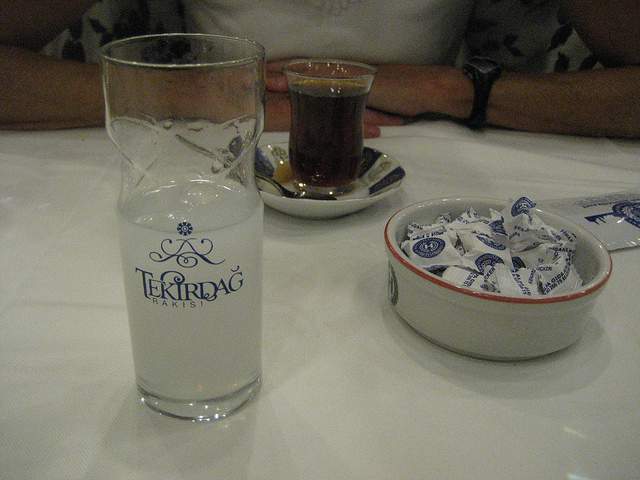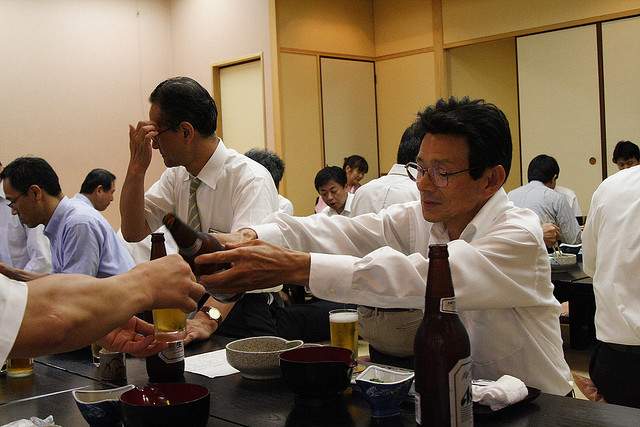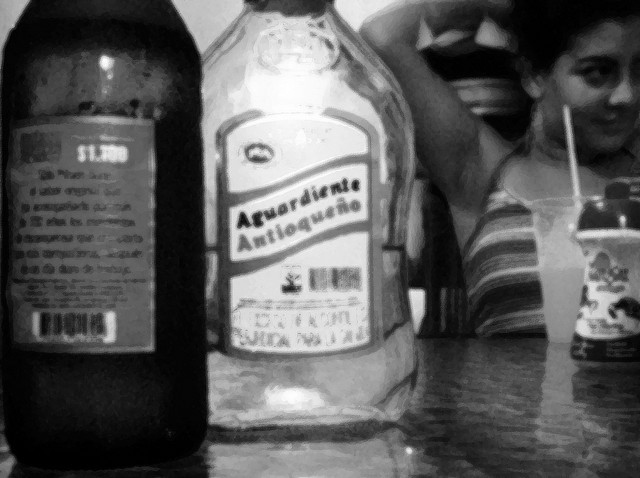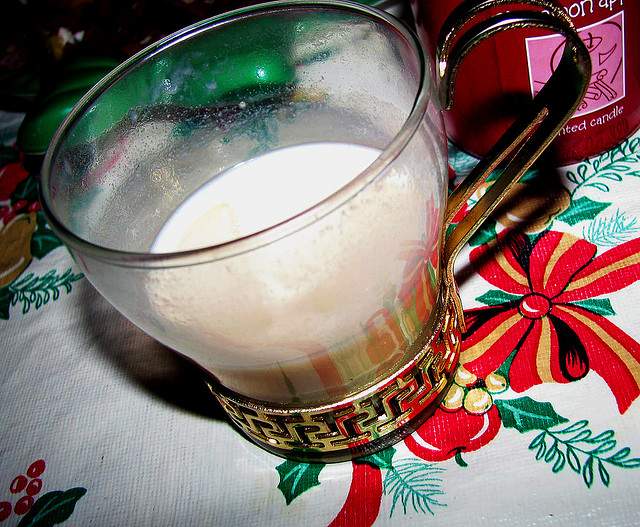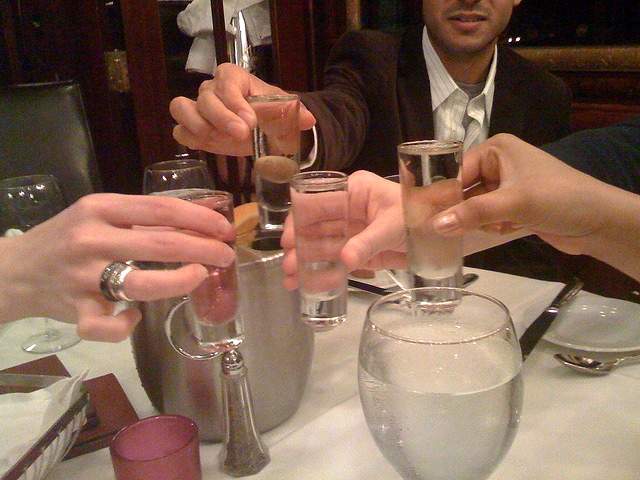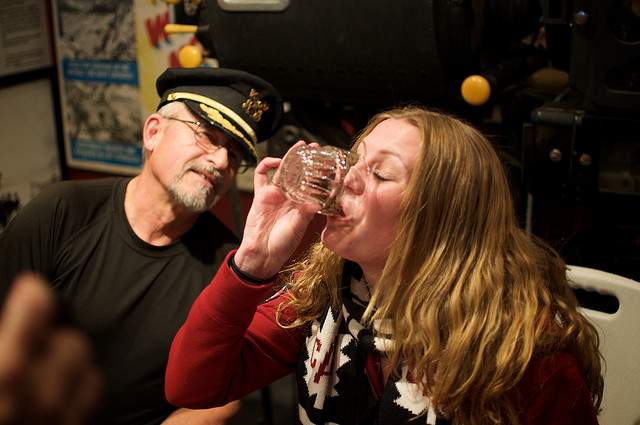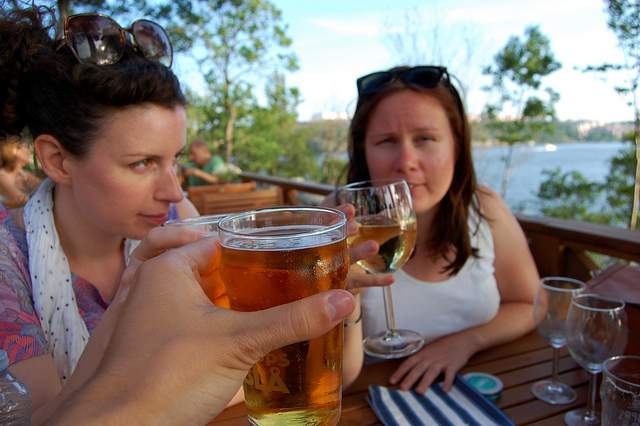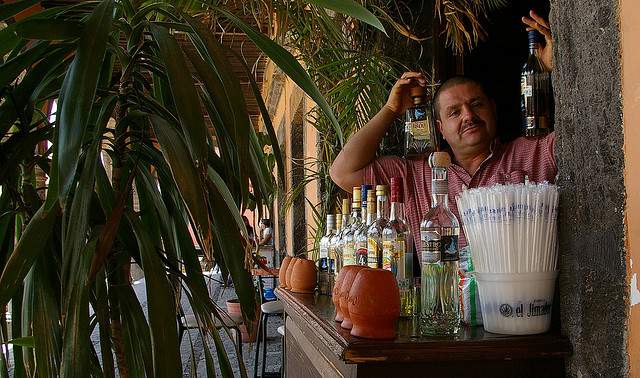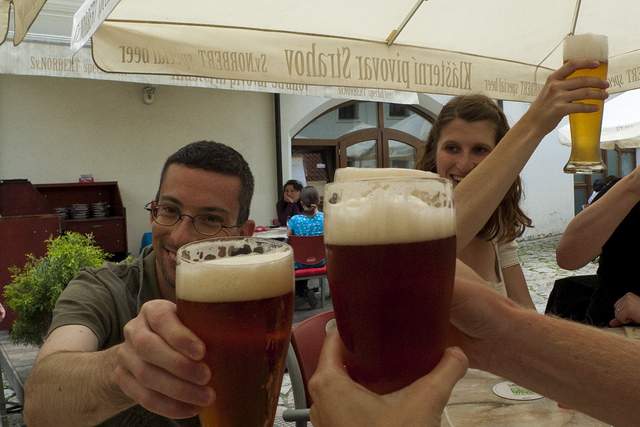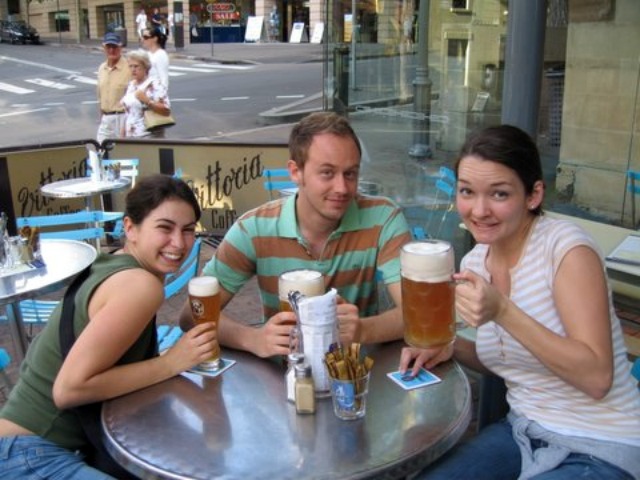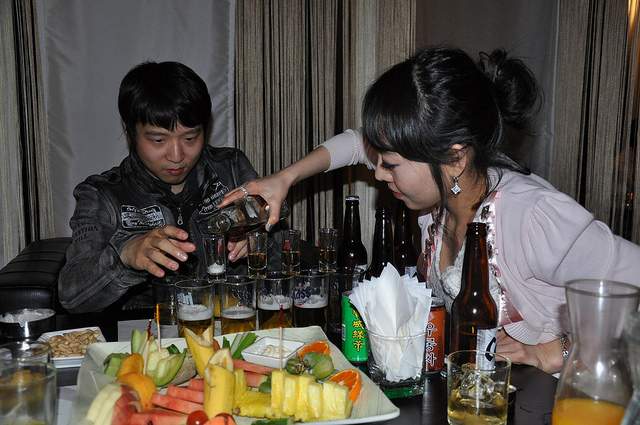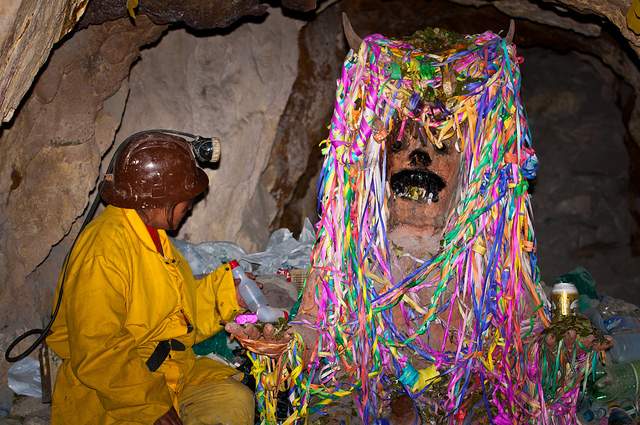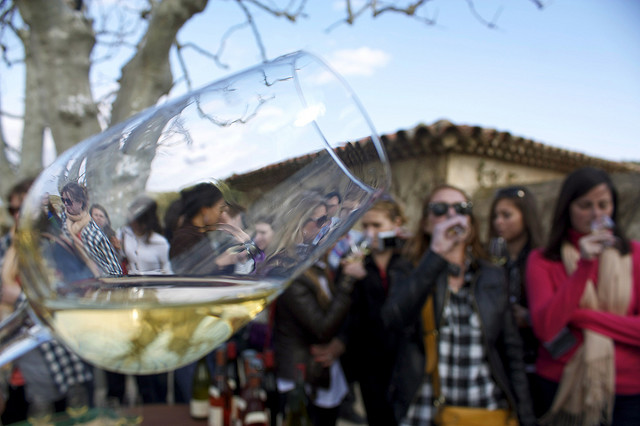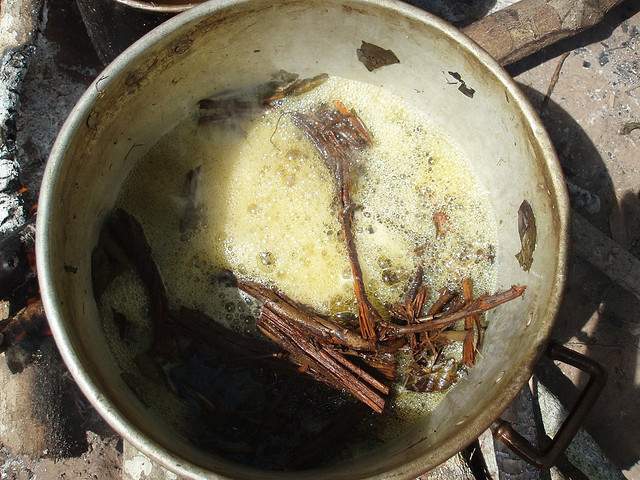There are those who drink in lieu of travel and those who travel to drink. And drinking itself is a form of travel.
The land of intoxication is often merry and full of laughter but it is also sometimes filled with the dark muck of your repressed emotions and terrifying and shameful. Mostly, however, it involves good friends or those who become good friends due to how easy it is to interact with people while drunk. Also, let’s face it; a whole lot of us are here today because of the amorous effects alcohol had on our parents’ libido.
Alcohol, more than any other imbibed substance, has always a sense of decorum about the act of its consumption. One does not often consume alcohol outside the trappings of some cultural paradigm. There are rules, and these rules will morph whichever direction you travel. When you are not familiar the rules you are often predicated as the outsider. This is rarely comfortable and so to help you avoid such situations I have prepared a guide to drinking traditions from around the world.
Georgia
The one thing you must understand about drinking in Georgia is the decorum of the toast – it is an ancient and venerated tradition and is central to Georgian culture. Prepare to participate in at least 20-30 toasts for every meal you eat in the presence of Georgians, and know that the toastmaster, or Tamada, will stand at random intervals during the meal and lift his receptacle skywards to perform an elaborate speech about anything from mothers to grapes to the act of toasting itself. This is always done with only wine, and sometimes, rarely, brandy. To toast with anything else is basically an anti-toast, an insult to whatever is being toasted. With that said: toasting Russia with your beer can will inspire conspiratorial grins and win you mad social capital.
USA
The most widely exported USA drinking tradition might be beer pong. Ideally little red plastic cups should be used as basket holes and the competition field is ideally a Ping-Pong table, though any hard-surfaced rectangular table at crotch height or taller should do the trick. After forming two ten-cup triangles (one vertex aimed at each player) with roughly a meter between the two parallel bases, try and bounce the projectile (a Ping-Pong ball, usually) once on the table and into the booze-filled cups. The alcohol of whatever home cup the projectile lands in must then be hastily skulled by the opponent, with high-fives being distributed among spectators nearby the victorious launcher.
Kazakhstan
In Kazakhstan, the ninth-largest country in the world, kumis is the national drink. It consists of fermented mare’s milk and is often drunk on ceremonious occasions or for no reason whatsoever. Alcohol content is about on par with a beer and its intoxicating effects are thought to be therapeutic. In the past its fermentation occurred in a jug of horse hide (still does in some places) but now is predominately brewed in large plastic or wooden vats. The thing to remember when drinking kumis is – despite how unhygienic it may seem – pour whatever you kumis don’t drink back into the kumis jug so that none is wasted, for that is the custom.
>> Book a Kazakhstan adventure tour
Germany
In Cologne, Germany, you will encounter one of the most delicious beers in the world – Kölsch – but its consumption is no simple matter. According to the Kölsch convention of 1986, it is forbidden to brew Kölsch outside the Cologne region, and in accordance with tradition you must drink Kölsch at about 10°C out of long, thin, cylindrical 0.2 litre glass, known as a Stange, or “pole” (some experts insist on sipping it from even smaller 0.1 litre glasses, lamenting how quickly the taste of Kölsch deteriorates while idle in a receptacle). During public gatherings in Cologne you will see no shortage of young Cologners proudly tugging a little wagon of Kölsch glasses behind them to ensure any potential drinking pals are well stocked.
>> Find out what else to drink in Germany
Turkey
The booze of choice for most Turks in a social setting is rakı, an anise-flavored liquor made from twice distilled grape pomice. The clear liquid is never drunk straight but rather with a splash of cool water, which transforms it white – something Turks call “Lion’s milk”. One must drink it out of a tall transparent cylindrical glass and it is almost never consumed without some sort of meze (appetizer). It is considered near blasphemous if drunk alone. The ideal setting – and Turks tend to be quite dictatorial about this – is among a large group of friends in a meyhane, in line with the example set down by the Republic’s most revered hero, Mustafa Kemal Ataturk, who died of cirrhosis of the liver.
>> Plan a culinary trip to Istanbul
Japan
In Japan it is tradition for a group of alcohol consumers to pour drinks for one another. This is a gesture of companionship and demonstrates the respect one has for one’s drinking buddies. To pour your own drink is morbidly frowned upon, as it risks upsetting the spirit of community and friendship among the group. The goal is to go enough rounds of drink pouring to ensure every person in the group has poured everyone else a drink.
>> Learn about a lesser-known side of Japan
Colombia
Aguardiente is the general name for any anise-flavored liqueur of high alcohol content in the Andean region of South America. It means, literally, “fire water.” Each swallow is a blast of hot black licorice and makes you want to dance or destroy something. Aguardiente is purchased by the bottle in salsa clubs and put in the middle of the table to be shared among friends, shot by excruciating shot. It is not for the weak-hearted, but you’ll be considered more Colombian if you do it.
>> Find out why you should visit Colombia
North America
Sometime in the 18th century, egg nog, which had until then been popular only among England’s fox-hunting aristocracy, crossed the Atlantic and set the New World – or at least Canada and the US – aflame (see Egg Nog riot of 1826). Well, aflame is perhaps too strong a word, but the gooey substance of milk, sugar, beaten eggs and booze (the French call it “chicken milk”) has firmly established itself as a common fixture of North American winter holiday gatherings (Thanksgiving, Christmas, New Year). It is usually mixed with brandy, rum or whiskey and ladled from a large vat ringed by Christmas decorations, and served in mugs. Then, sometime after New Years, egg nog miraculously vanishes from store shelves and isn’t spoken of again until the following late autumn. Note: egg nog should only be drunk if you’re wearing a holiday-themed sweater.
Russia
To drink in Russia means to drink vodka, and to drink copious f-ing amounts of it. The average Russian drinks 18 litres of pure alcohol annually, and 35,000 deaths from alcohol poisoning occur every year. So, you had better come with your drinking hat on. When drinking vodka with Russians keep in mind that mixing vodka with anything other than more vodka is considered cowardly, and that once a bottle has been opened it must be finished, regardless of consequences.
>> Learn about traveling on the Trans-Siberian in Russia
China
When consuming alcohol at the Chinese table it is important you be familiar with the complex Chinese code of social decorum, lest you wish to go around offending people. The toast is an important element of this decorum. When distributing toasting liquid make sure you pour all glasses completely full, and serve the eldest – and those considered most superior – first. Refusing to participate in a toast is to slap in the face not only to your host but to the entire group. However, if you are really incapable of consuming alcohol – like if you’re allergic to it or something – you can save face by recruiting someone else to drink for you. During the toast: lightly clink glasses, making sure the glasses of your superiors are held higher than yours, and then swill the drink completely and turn your glass over on the table to demonstrate nothing remains.
>> Plan an adventure trip to China
Canada
If you ever find yourself riding way out in the Yukon and happen to gallop past Dawson City, then steer your horse on down to the Sourdough Saloon and earn yourself a few gold stars by ordering the famous sour toe cocktail. This now infamous drink contains a generous gulp of alcohol as well as a very real, and very amputated, alcohol-preserved human toe. This weird tradition began in 1973 with what was rumored to be the severed toe of a miner. It only costs $5 to try the cocktail and earn a certificate you can boast about to someone who will probably think you’re gross – the only rule is that your lips must touch the toe.
Sweden
If you’ve ever been in a duel then you’re ready to toast in Sweden. The traditional “Skål” dates back to the maniacal ancient Vikings who once held their drinking buddies’ gazes to ensure the other person wasn’t secretly withdrawing a broadsword for nefarious purposes. Nowadays Scandinavians are more likely to withdrawal daffodils than medieval weaponry, but the tradition of meeting the other’s gaze persists. Today it’s about mutual respect. To propose a toast, look the other person in the eye and say “skål,” maintaining eye contact throughout the ingestion process. In groups, toast to the person next to you. “Skål,” by the way, means “shell” or “bowl,” as some Vikings once found it humorous to drink booze from the skulls of their vanquished enemies.
Mexico
This factoid is more of a myth buster. For those of you who thought that having an agave worm floating all recumbent and finger-like in the hoof of your tequila bottle was a Mexican tradition, think again. The practice dates back to 1950 when an entrepreneur named Jacobo Lozano Paez decided to begin dropping the worms – which until then only occasionally got cooked up during the brewing process of a related alcohol called mescal – into tequila bottles as a marketing gimmick he thought gringos would fall for. It worked. Now it’s become tradition to eat the worm.
>> Learn more about the history of Tequila
Czech Republic
The Czechs both brew and make beer vanish down their throats like wizards, and if you’re going to drink with them there are a few rules you’re going to have to follow. First of all, Czechoslovakia is no longer a country, so stop calling it that. Second, when toasting, make direct and very serious no joke eye contact with everyone you clink your mug with, and don’t forget to say (“Nozdravy”). And, whatever you do, never cross arms with anyone during the clinking process. If this occurs you will be struck with seven years of unsatisfactory sex. Before chugging tap the bottom of your mug on the table and then proceed to skull every last golden drop.
>> Get off the beaten path in the Czech Republic
Hungary
One of the signature drinks of Hungary is pálinka – a brandy drink enjoyed socially among most Hungarians, with the exception of the Roma people, or Gypsies. Among Hungarian Gypsies there exists a rigid decorum concerning the consumption of brandy. In general, it would be considered highly inappropriate to drink or to even serve the wicked stuff, unless it’s under three circumstances. If you want to drink brandy you’re going to have to do it first thing in the morning, before you so much as think about breakfast or toilet needs or anything else; in the exceptional circumstance of a woman about to embark on a rubbish-scavenging trip; or at a wake when tradition not only permits, but practically requires, that the men gather round the grave site for a drink, or several.
>> Learn about other local drinks to try
Australia
In the land down under there’s something known as a “shout,” and you’d better understand it if you go out for “schooners” with your new “mates.” It’s more or less ritualistic baton-passing when it comes to buying a round of beers. You might hear something like “Hey mate, beers are getting low,” which means it’s your turn to go to the bar to exchange your $ for the next round of foamers. It’s considered morally reprehensible to flake on your duty to shout, and if you do you risk being labeled a “tight ass,” and perhaps even a “bludger.”
>> Learn about the beers of Australia
Korea
Goods news: In Korea, it’s totally socially acceptable to get obscenely pissed as long as you do it with other people! You’ll need to be keen on a few etiquette rules, however. First, never pour your own drink. Fill the cups of your elders and superiors and then wait –patiently – to be served. When you drink turn away from your elders and superiors as a sign of respect. Never fill another’s glass if it is already partially full, and if someone skulls their glass and passes it to you, hold it with both hands to be filled, and be prompt with refilling and returning it to them. Also, brush up on your karaoke skills.
Bolivia
In Bolivia, alcohol is often consumed before work that requires great strength or energy. This is particularly true of mining. But because they are often exploited and have little money, the alcohol most popular among Bolivian miners is pure grain alcohol. This is usually available in any town with a mine in the market beside the coca leaves and dynamite. Miners begin consuming this stuff at a considerably young age – like 14 – and many say that because the alcohol is pure it will inspire El Tio, who is the demon that rules the underground, to help them to discover a vein of pure mineral. It is common to pour a little alcohol as an offering to El Tio, who in places like Potosi will have a small sanctuary within the mine.
>> Find out what to do in Bolivia
France
Until now the name of the game has pretty much been rapid and utter inebriation; but try that during an evening out in Paris and you will come to understand how devastating to your emotions a room full of frowning French people can be. The first thing you should keep in mind is that alcohol is not just something that catapults you into funland, but rather something to be savored, to be appreciated, gently. If you add an ice cube to your wine in France it will jut out of your glass like a glacier. And be gentle with pouring, gently filling the glass no further than 51% full, and then DON’T YOU DARE take a drink until everyone else has also been served – at which point one should then gently raise the glass, high, not too high, but high, and toast to everyone’s health by saying “Santé!”
>> Study our French wine guide
Brazil
Say goodbye to your mind because you won’t be needing that where we’re going. This hasn’t much to do with alcohol, but is apposite in spirit. In the Brazilian Amazonian state of Acre in the 1930s a syncretic spiritual practice known as Saint Daime was born and since then has created controversy and court battles around the world. This is because their rituals revolve around the consumption of a hallucinogenic tea called Ayahuasca, a substance that has been used for divinatory and healing purposes for millennia in the Amazon region of South America. The tea is basically a psychoactive infusion of dimethyltryptamine (DMT) and an MAO inhibitor. It has the effect of more or less catapulting you to Jupiter. Santo Daime rituals involve a collective singing of hymns, sometimes while engaged in formalized dance movements. At other times practitioners just sit in chairs together undergoing visions.
>> Book a Brazil adventure trip
Read more about drinking on your travels:
- 7 Great Beer and Wine Festivals Around the World
- The Best German Style Beer Halls Outside of Germany
- California Wine Country: Planning a Cheap Trip Yourself
- How to Get Drunk Around the World: 5 Countries and Their Drinking Rules
Photos by: shioshvili, Laughing Squid, dcwpugh, obvio171, rfarmer, colincookman, Angelica Diaz, a strange girl, anokarina, Cormac Heron, John Biehler, mrlerone, mickou, apes_abroad, savagecat, kidicarus222, grahamhills, n o m a d e s, Ayahusca in San Francisco, ofrabjousday
